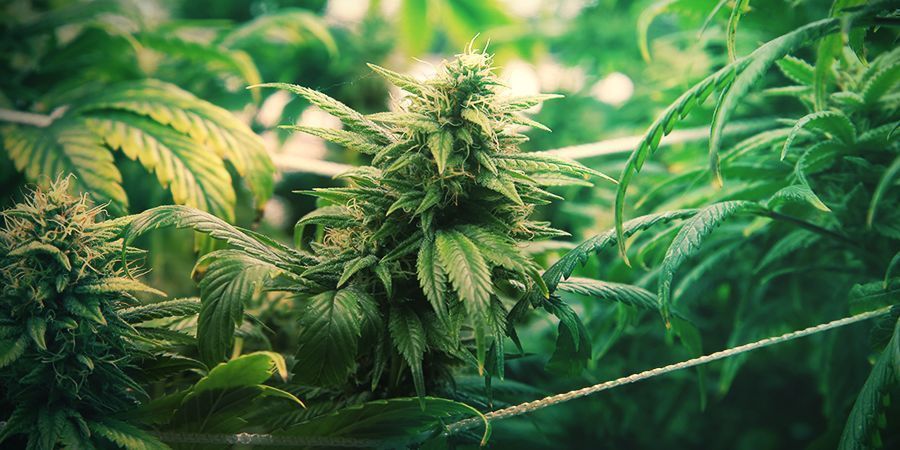How To Trellis Cannabis

A bit of guidance goes a long way, and this sentiment couldn't be truer when growing cannabis plants at home. While trellising is more applicable to medium and large plants, there's absolutely nothing stopping you from making sure all of your growing projects flourish. From standard vertical trellises to horizontal techniques, known as ScrOG, we cover the tips, tricks, and methods that will help you get the best out of your plants.
WHAT IS TRELLISING?
Technically, trellising is only performed outdoors. But it does have amazing indoor applications, which we’ll address a little later. First, we need to wade into this agro-art before we take you deep into trellising territory. The trellis itself is an ancient fusion of architecture and agriculture, formerly fashioned into a latticed wooden frame. No one knows for sure when or precisely where trellising first originated, but it was around long before the Romans, and by the 19th century, it evolved into an art form in France.
Modern trellises are commonly made of lightweight netting or a combination wire-plastic frame. It’s really just a frame with grids for the shoots to grow through, so it hasn’t radically changed over time. Essentially, only the raw materials to make the trellis have changed. The principles have not.
Viticulture is most closely associated with trellising. Training vines and fruiting plants to grow through either vertical or horizontal frames for a heavier harvest is nothing new. The crossover applications to cannabis plants are obvious. You can order a trellis online or create your own with basic supplies from the local garden centre. Chicken wire, a pack of cable ties, and four posts are all you really need for a simple custom trellis.
WHAT ARE THE BENEFITS AND CHALLENGES OF TRELLISING CANNABIS?
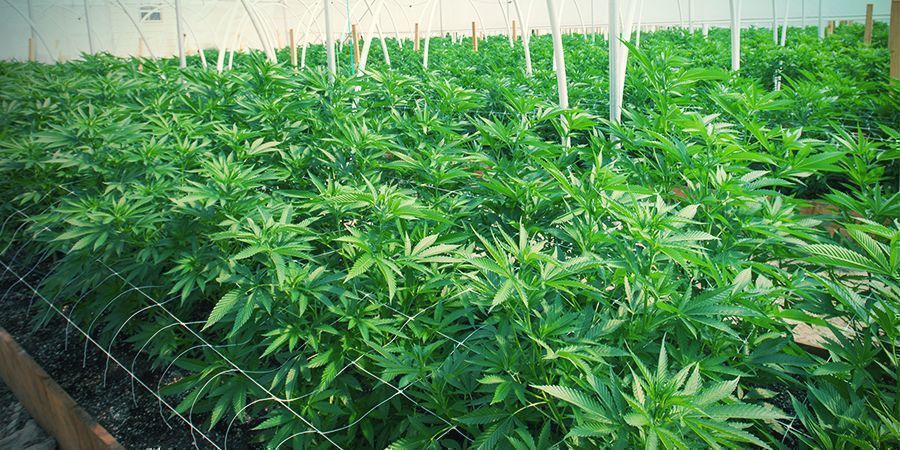
By spreading out shoots and creating a flat canopy or “living wall”, depending on how you have oriented your trellis, more rays of sunlight hit more flowers. This is advantageous as the trellis supports the altered plant structure, maximises bud production, and overall, is the most efficient use of grow space in the cannabis garden. Air circulation is also improved, provided you defoliate lower growth liberally.
The challenge is the hands-on, perhaps daily plant care required to fill the squares of the frame with big, fat colas. Enter the espalier technique. This forerunner to LST is the ancient way to manipulate shoots to make a cannabis bush. Outdoors, espalier is probably more accurate of a system as monster plants trained into a horizontal trellis really do resemble a hedgerow—but let’s not get too fancy and stick with LST going forward.
Bending and weaving shoots through a trellis requires the touch of those practiced in LST. Most growers will also top or FIM their plants too to promote bushy growth and multiple main colas. So you really need to be a dab hand at marijuana manipulation before diving into trellising. Sure, the best way to learn is always by doing, but trellising is really too much for a novice to take on.
Trellising is by no means a quick win. You will have to work for that extra yield and those higher-quality top colas. Cannabis plants need a lengthy vegetative phase to develop enough secondary shoots and to recover from the pruning associated with trellising. If time is a factor and a quick harvest is your primary objective, then trellising is probably not for you.
HOW TO TRELLIS CANNABIS OUTDOORS
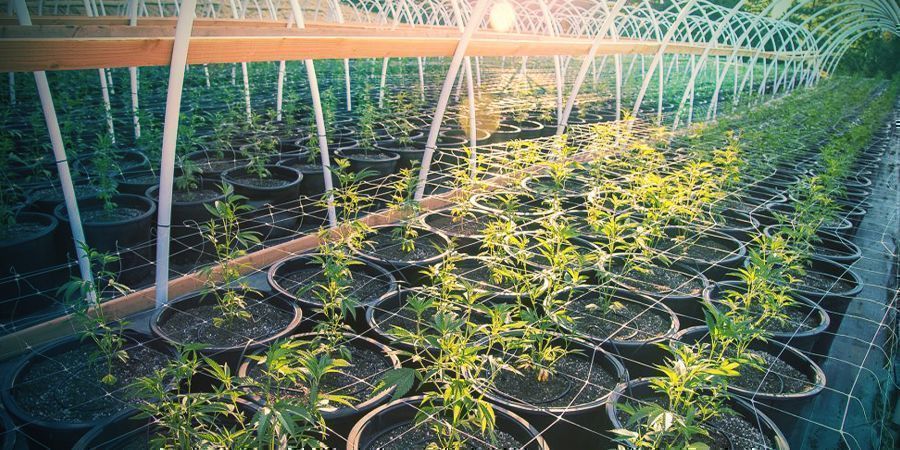
Outdoor growers who want to keep plant numbers low and yields high love trellising cannabis plants. If you really want to raise your outdoor grow game to an art form, then you need to trellis a monster marijuana plant. Tougher metal wire or plastic fencing with plenty of gaps for shoots are the ideal materials for trellising outdoors.
Trellising cannabis plants outdoors will invariably include quite a bit of DIY. Whether you choose a horizontal or vertical structure, be prepared to make modifications. For those that enjoy hands-on ganja gardening, trellising is the way to grow.
RECOMMENDED TRELLISING KIT
Option 1: simple online trellis for €20 or less
Trellis netting is widely available from grow shops online. This is suitable for indoor ScrOGs and outdoor trellising. Typically, trellis nets in the 1 × 1m and 2 × 2m standard sizes are perfect for a terrace trellis.
However, you can get rolls of this cut to size, as many metres long and wide you need. A dozen bamboo or metal poles about 1m tall are always handy and easy to make a frame for the trellis. Also, don’t forget to buy 4–6 net clamps to hold the trellis netting securely in position.
Option 2: garden centre trellis for €100 or less
If you require a sturdier trellis, check out the trellis options at your local garden centre. You might find an off-the-shelf trellis that’s perfect. But if you don’t, you’ll find all kinds of materials that can be easily adapted.
Chicken wire fencing, green plastic fencing, or even latticed wooden fencing can work. All you need is a packet of cable ties or a hammer and nails, depending on how you plan to fasten the trellis in place. Support poles, either metal, bamboo or plastic, and soft gardening wire will be useful.
VERTICAL TRELLISING: TRAIN A VERTICAL VINE
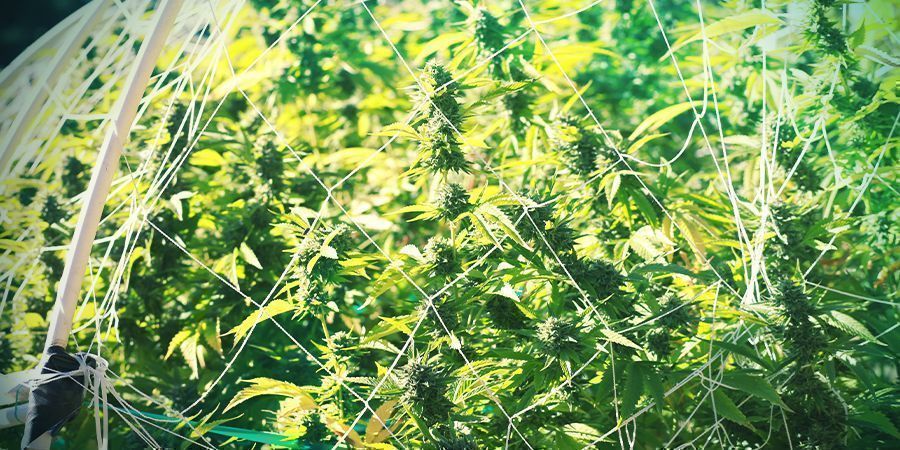
The vertical trellis can work for outdoor cannabis grows. You can fix your netting or screen to a wall and train your plants to grow like vines. Depending on how tall you allow them to grow, you may even need a step ladder to continue weaving shoots through lattices late in summer.
Patio and back garden growers often prefer this growth pattern, especially if only one wall gets decent sunlight. Flowering tops will also be in direct sunlight perhaps an hour or two longer in the afternoon to early evening, while lower growth is shaded.
If you don’t have a wall to fix the trellis to, you can make a simple frame. Start by driving two poles into the dirt 1m apart. Next, stretch your screen or netting across the gap. Finally, secure in place with clamps or cable ties fastened to the poles. Plant your cannabis or place your pot beside it and bend the shoots through.
HORIZONTAL TRELLISING: CREATE HEDGES OF BEAUTIFUL GANJA
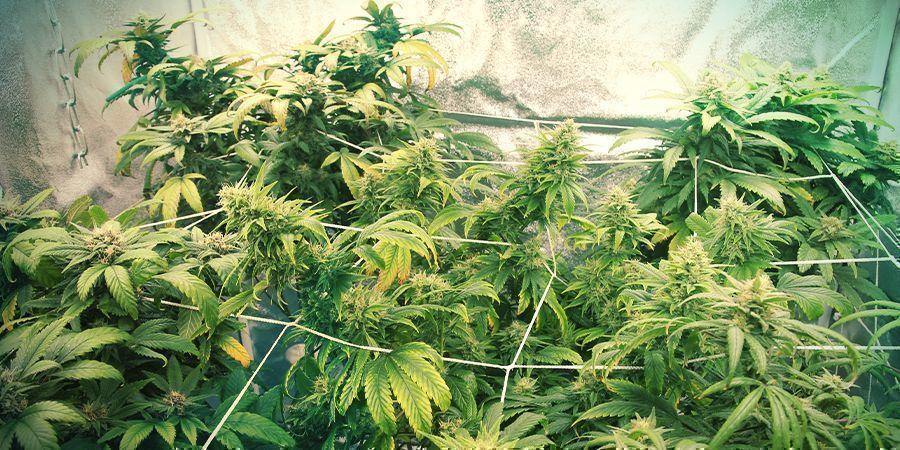
The horizontal trellis is the super-sized outdoor version of a ScrOG. Using the very same equipment described above, cannabis bushes can be created. Balcony and terrace growers with plenty of sunlight that want to maximise production and keep plants from reaching for the sky will align their screen or netting horizontally. It can be as simple as a couple of nails in the wall and stretching the trellis from one end of the garden to the other at the desired height.
Alternatively, individual plants can be trellised as follows.
- Drive a 1m pole 10cm deep into each of the four corners of your pot.
- Cut a square plastic screen to the desired dimensions.
- Secure your screen in place with cable ties or clamps to the poles.
Huge weed trees can attract unwanted attention. Plus, humongous, trophy-winning main colas are more vulnerable to bud rot. Securing a screen about 1m above the ground and training plants through it for a flatter, more dispersed canopy of flowers is a smarter option. Bend, fold, tuck, and weave, and just a few plants can fill the garden with a forest of fat colas.
INDOOR TRELLISING: THE SCROG METHOD FOR MAXIMUM PRODUCTION
The indoor version of trellising is known as the ScrOG or screen of green method. In fact, it’s the same thing. The most popular ScrOG configuration is a horizontal screen covering the grow area with plenty of gaps for the shoots to grow through. Sometimes it can be U shaped, or even like a wave of colas. But it’s still an indoor trellis. In fact, plenty of growers will use the same outdoor trellis netting or lightweight mesh screens for their ScrOG.
Indoor growers don’t just ScrOG for a bumper harvest of fat tops, many microgrowers must drop a ScrOG to control plant height. That’s right, the trellis can be tailored to suit your grow space. A trellis can work in grow-ops of all sizes, from a warehouse to a wardrobe.
Scrogging, like outdoor trellising, will prolong vegetative growth. Shoots will need to be adjusted and spread out, perhaps until mid-way through the bloom phase. Moreover, as indoor light sources are usually hanging stationary above the canopy, the grow lamp will also need constant adjustment. Maintaining the optimal light distance will become a task. Furthermore, the growth below the screen will need to be stripped away through a combination of defoliation and lollipopping.
If you’re gonna go deep into trellising, you better have plenty of game in the grow-op. Trellising is unforgiving to amateurs. But for those with green fingers and a little flare, well, trellising will make you feel like man discovering fire.













 United States
United States

